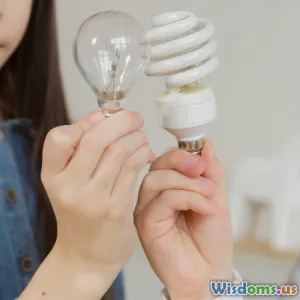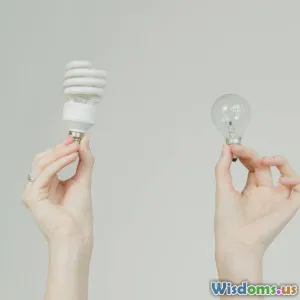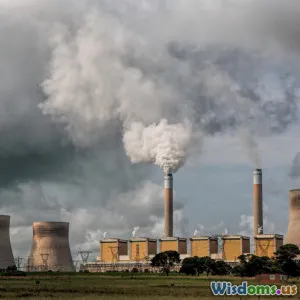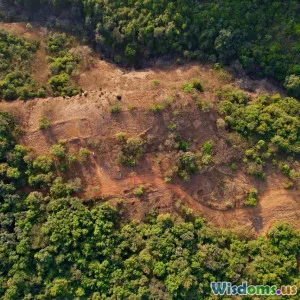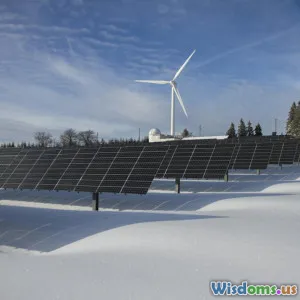
The Future of Clean Energy Technologies
6 min read Exploring the advancements and potential of clean energy technologies for a sustainable future. (0 Reviews)
The Future of Clean Energy Technologies
The quest for sustainable energy sources has never been more critical than it is today. As climate change continues to pose significant risks to our environment, the need for clean energy technologies has become paramount. This article delves into the future of clean energy technologies, exploring innovations that promise to reshape our energy landscape and promote sustainability.
Understanding Clean Energy Technologies
Clean energy technologies refer to methods of generating energy with minimal environmental impact. These include renewable sources such as solar, wind, hydroelectric, geothermal, and biomass energy. Unlike fossil fuels, clean energy sources are sustainable, produce little to no greenhouse gas emissions, and are increasingly becoming economically viable.
The Role of Solar Energy
Solar energy has emerged as one of the leading clean energy technologies. With advancements in photovoltaic cells and solar thermal technology, solar power is becoming more efficient and affordable. Innovations such as perovskite solar cells, which promise higher efficiencies at lower production costs, are on the horizon. Furthermore, improved solar energy storage solutions, including lithium-ion and emerging solid-state batteries, are crucial for optimizing solar energy use, particularly during non-sunny periods.
Key Innovations in Solar Energy:
- Bifacial Solar Panels: These panels can absorb sunlight from both sides, increasing energy generation.
- Solar Skins: Aesthetic customization of solar panels that blend with the roof, appealing to homeowners.
- Floating Solar Farms: Utilizing bodies of water for solar installations reduces land use and evaporation.
Wind Energy Advancements
Wind energy is another cornerstone of clean energy technologies. Turbine design has evolved, leading to larger and more efficient turbines capable of harnessing wind energy even at lower speeds. Offshore wind farms present significant potential, with the ability to generate power for millions of homes.
Innovations in Wind Energy:
- Vertical Axis Wind Turbines (VAWT): These turbines can capture wind from any direction and are quieter than traditional models.
- Tidal and Wave Energy: Harnessing the power of ocean currents and waves to generate energy.
Energy Storage Solutions
As renewable energy sources become more prevalent, efficient energy storage solutions are vital for managing supply and demand. Traditional battery technologies are being complemented by cutting-edge innovations such as:
- Flow Batteries: Ideal for large-scale energy storage, offering long cycle life and scalability.
- Hydrogen Fuel Cells: Converting excess renewable energy into hydrogen for later use.
The Rise of Smart Grids
Smart grids represent the future of energy distribution, integrating advanced technologies to enhance the efficiency and reliability of energy use. These systems can manage consumer demand in real-time, reducing waste and optimizing the use of renewable sources.
Features of Smart Grids:
- Two-Way Communication: Allows utilities to interact with consumers and adjust energy supply accordingly.
- Decentralization: Encourages local energy production and consumption, reducing transmission losses.
Policy and Investment Trends
The future of clean energy technologies also hinges on supportive policies and investments. Governments worldwide are setting ambitious renewable energy targets and providing incentives for clean technology adoption. For instance, the European Union aims to reach carbon neutrality by 2050, driving investments in renewable energy projects.
Investment Opportunities:
- Green Bonds: Financial instruments to raise funds for environmentally sustainable projects.
- Public-Private Partnerships: Collaborative efforts to fund and develop clean energy infrastructure.
Conclusion
The future of clean energy technologies is bright, driven by innovation, investment, and a pressing need for sustainability. As we continue to develop and adopt these technologies, we can mitigate the impacts of climate change and work toward a cleaner, more sustainable world. The transition to clean energy isn't just beneficial for the environment—it also opens up economic opportunities and promotes energy independence.
In conclusion, embracing clean energy technologies is not merely an option; it is a necessity. By understanding and investing in these advancements, we can ensure a sustainable future for generations to come.
Rate the Post
User Reviews
Popular Posts










